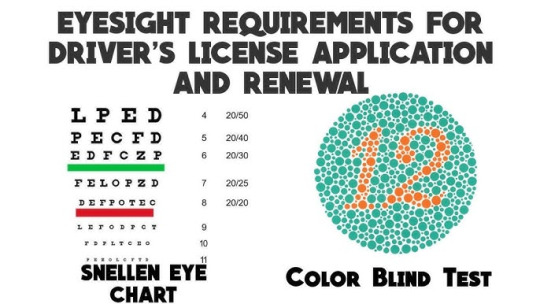#DriverLicenseCanada
Explore tagged Tumblr posts
Text
How Canadian ID Requirements Differ for Citizens and Newcomers
In Canada, proper identification is essential for accessing government services, applying for jobs, opening bank accounts, and, of course, getting a driver’s license. However, the ID requirements differ significantly between Canadian citizens and newcomers, including permanent residents, refugees, and temporary visa holders. Understanding these differences is important to avoid delays and ensure a smooth transition into Canadian life. Let's dive into how the requirements vary and what you need to prepare.

1. Standard ID Requirements for Canadian Citizens
For Canadian citizens, obtaining or renewing a government-issued ID, such as a driver’s license, is a relatively straightforward process. Typically, they need to present:
A valid Canadian birth certificate or a Canadian passport.
Proof of residency in the province or territory (such as a utility bill, lease agreement, or official government correspondence).
A secondary piece of ID, which could be a health card, Social Insurance Number (SIN) card, or another photo ID.
Proof of name change if applicable (e.g., marriage certificate or legal name change document).
Canadian citizens usually do not have to present immigration documents. Their proof of citizenship is sufficient to meet both identity and residency requirements when applying for a driver’s license or other services.
2. ID Requirements for Newcomers to Canada
For newcomers — including permanent residents, work permit holders, students, and refugees — the process is a bit more involved. Newcomers must provide documents that establish both identity and legal status in Canada. These documents often include:
A valid Permanent Resident (PR) card or Confirmation of Permanent Residence (COPR) document.
A valid visa or work/study permit (for temporary residents).
Passport from the country of origin (used in combination with Canadian-issued documents).
Proof of residency in the province (similar to citizens — a lease, utility bill, etc.).
In some provinces, an additional letter confirming eligibility to remain in Canada for a specified period may be required.
Importantly, newcomers often must show that their immigration status allows them to stay in Canada for a certain length of time (usually over six months) before they can qualify for services like provincial health insurance or a full driver’s license.
3. Temporary vs. Full Licenses
Newcomers may initially be issued a temporary license while they fulfill further residency requirements or complete necessary testing (such as vision or knowledge tests). Depending on their experience abroad, they may also have to undergo a graduated licensing program, even if they previously held a driver’s license in another country.
Canadian citizens renewing or upgrading their licenses typically face fewer restrictions unless they have been out of the country for extended periods.
4. Proof of Residency Is Essential
For both groups, proving residency within the province is key. A bank statement, rental agreement, or recent utility bill with your name and address is usually sufficient. However, some provinces, like Ontario and Quebec, have a specific list of acceptable documents, so it’s important to verify local requirements before applying.
Understanding the ID requirements for Canadian citizens versus newcomers can help streamline your application for services like a driver’s license. Each province may have slight variations, so it’s always best to check the most up-to-date information. For a full guide on Canadian driver’s licenses, ID requirements, and practice tests, visit LicensePrep.ca — your trusted resource for navigating the licensing process with confidence.
#CanadianID#NewcomersToCanada#DriverLicenseCanada#IDRequirements#LicensePrepCanada#CanadianCitizenship#ImmigrationCanada#ResidencyProof#NewcomerSupport#LicensePrep
4 notes
·
View notes
Text
How to Pass Your First Try at the Knowledge Test for a Canadian License
The knowledge test is a critical step for anyone obtaining their first driver’s license in Canada. It assesses your understanding of traffic rules, road signs, and driving laws specific to your province. Here’s how you can increase your chances of passing on your first try!

1. Know What’s On the Test
Each province has its own set of driving rules and road signs, but all knowledge tests include questions about:
Traffic signs: Shapes, colors, and meanings.
Rules of the road: Speed limits, stopping regulations, and lane changes.
Penalties and fines: Consequences of traffic violations, such as speeding or distracted driving.
Driving in different conditions: Night driving, winter conditions, and highway rules.
Some provinces also focus on environmental driving (eco-driving) or distracted driving laws.
2. Study the Driver’s Handbook
Every province provides a driver’s handbook that contains everything you need to know for the test.
Example: In Ontario, it’s called the Official Ministry Driver’s Handbook.
Make sure to read it cover-to-cover to familiarize yourself with the rules.
Keep the handbook handy for quick reference while studying.
3. Take Practice Tests
Practice tests are an excellent way to gauge your readiness.
Websites like licenseprep.ca offer online practice tests that simulate the actual exam. These tests cover the exact type of questions you'll face, including the layout and timing.
Practice consistently to improve your timing and accuracy.
4. Focus on Road Signs
Road signs can be tricky because each province has some unique signage.
Flashcards are a great tool to memorize the meanings of road signs.
Pay attention to warning signs, regulatory signs, and information signs.
5. Understand Key Road Rules
Make sure you know the answers to these common knowledge test topics:
Speed limits (including school zones, residential areas, and highways).
Right-of-way rules (who goes first in different scenarios).
Alcohol and drug limits: Learn the legal blood alcohol content (BAC) for drivers in your province.
Demerit points system: Know the points assigned to common violations.
6. Stay Calm During the Test
On test day:
Arrive early to avoid rushing.
Bring your ID and any other required documents.
Read each question carefully before answering — don’t rush.
If you don’t know an answer, make your best guess, and move on to avoid wasting time.
7. Know the Passing Score
Most provinces require a pass rate of 80-85% on the knowledge test.
Review your answers carefully if you have time left. Guide your teen's journey with help from licenseprep.ca.
#CanadianDrivers#KnowledgeTest#DriverLicenseCanada#PassYourTest#LicensePrep#RoadSafety#NewDrivers#DrivingInCanada
6 notes
·
View notes
Text
What Are the Vision Standards for Driving in Canada?

Clear vision is essential for safe driving. In Canada, each province and territory has specific vision standards that individuals must meet to obtain or renew a driver’s license. If you're planning to take your driving test or renew your license, it's important to know what to expect during your vision assessment.
Let’s break down the requirements and what they mean for you as a new or returning driver.
Why Vision Matters
Driving requires sharp distance vision, peripheral awareness, and the ability to adjust to light changes. Poor vision can delay your reaction time, increase the risk of collisions, and compromise your ability to read signs or detect pedestrians.
That’s why Canadian licensing authorities require all drivers to meet basic visual standards before being allowed on the road.
General Vision Standards in Canada
While exact standards may vary slightly by province, the most common requirements are:
✅ Visual Acuity
Most provinces require 20/50 vision or better in at least one eye (with or without corrective lenses).
If your vision is worse than this, you may need an assessment from an eye specialist and may not be eligible to drive.
✅ Peripheral Vision
Adequate horizontal visual field, often 120 degrees or more, is required.
This ensures you can detect vehicles or hazards from the sides without turning your head.
✅ Corrective Lenses
You are allowed to use glasses or contact lenses to meet the required standard.
If you need them to pass the test, a condition will be added to your license stating you must wear them while driving.
What Happens During the Vision Test?
You’ll typically undergo a simple screening at the licensing office using a wall chart or vision-testing machine. If you don't pass, you’ll be referred to an optometrist or ophthalmologist for a more comprehensive exam.
Can You Drive with Vision Loss?
In some cases, yes. Drivers with limited vision in one eye (monocular vision) or those with certain eye conditions may still qualify for a license with restrictions, such as only being allowed to drive during daylight hours or within a specific area.
Learn the Rules with licenseprep.ca
Driving laws may differ from what you're used to. Use licenseprep.ca to study road signs, local rules, and prepare for your tests confidently.
Final Thoughts
Good vision is critical for safe and legal driving in Canada. Before you book your test or renew your license, make sure your eyesight meets the required standards. If you’re unsure, a quick visit to an eye doctor can save you time and stress down the road.
#DrivingVisionStandards#VisionTestCanada#NewDriversCanada#LicensePrepCanada#CanadianDrivingTest#RoadSafetyCanada#EyesightForDriving#DriverLicenseCanada
0 notes